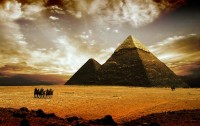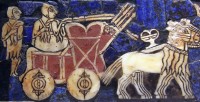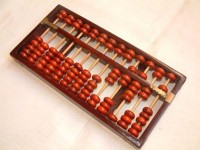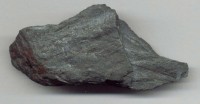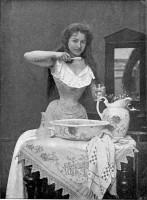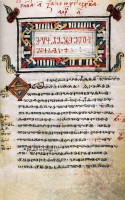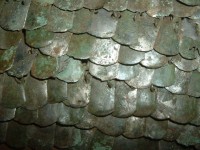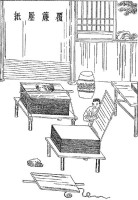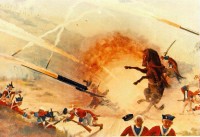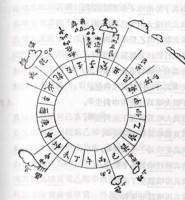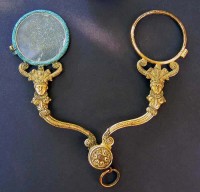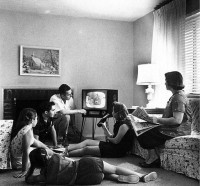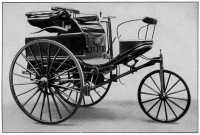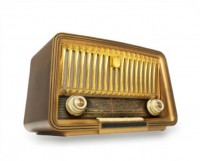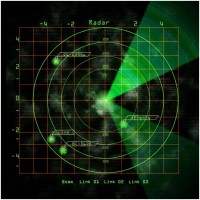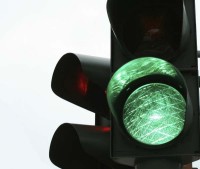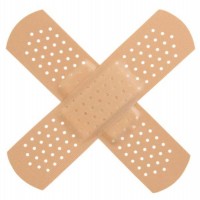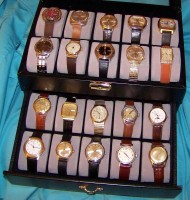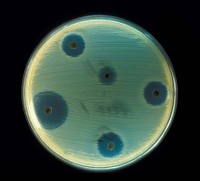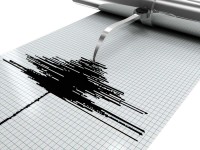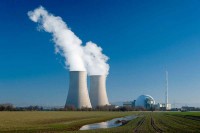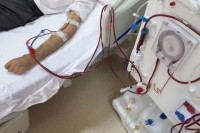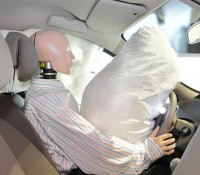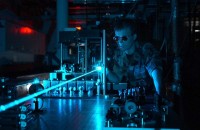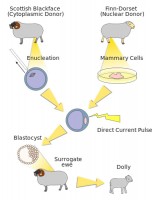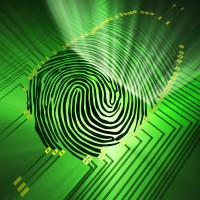An invention is a device, process, or method that is novel and/or unique. Its design is an improvement of an existing device or product. It can also be a new process for producing a result or object. An invention could be a radical breakthrough or a unique function not apparent to others in the same field. Inventions are important to design and artistic creativity or innovation. They often expand the limits of human capability, experience, and knowledge.
Inventions of Prehistory
Inventions of Ancient History
Inventions of the Middle Ages
Inventions of the Early Modern Period
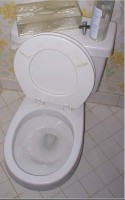 |
 |
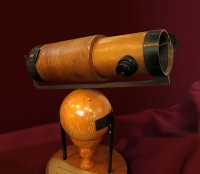 |
| Flush toilet (c. 1591) Country: England Inventor: John Harington The first incarnation of the modern flush toilet was invented by John Harington in Britain. The design included a wash-down mechanism to empty the bowl as well as a mechanism to refill the basin. |
Pendulum clock (1656) Country: Netherlands Inventor: Christiaan Huygens Christiaan Huygens invented the pendulum clock in 1956. In 1957, he patented it. His idea came from Galileo Galilei’s observation of pendulums. Galilei discovered that pendulums make excellent keepers of time. |
Reflecting telescope (1668) Country: England Inventor: Sir Isaac Newton Sir Isaac Newton is regarded as the first builder of the reflecting telescope in 1668. A reflecting telescope forms images through the use of curved mirrors that reflect light. |
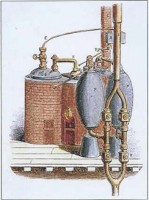 |
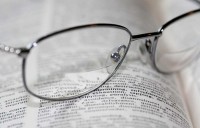 Photo by: liz west Creative Commons |
|
| Steam engine (1698) Country: England Inventor: Thomas Savery Thomas Savery invented the first crude steam engine. Thomas Newcomen improved on Savery’s design. James Watt improved Newcomen’s design, which produced the steam engine that would start the Industrial Revolution. |
Bifocal lens (1784) Country: US Inventor: Benjamin Franklin The first bifocal (an eyeglass with lenses of two optical strengths) was invented by Benjamin Franklin. This discovery is found to be controversial, however, since there were other inventors of the bifocal. Despite this, it has been confirmed in his correspondences that Franklin invented bifocals independently of the others and was the first one to do so. |
Inventions of the Industrial Revolution
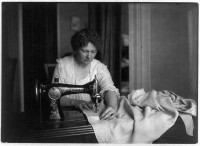 |
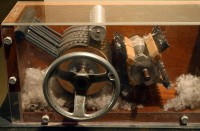 |
 |
| Sewing machine (1790) Country: England Inventor: Thomas Saint The sewing machine is designed to sew stitches of fabrics with thread. This invention greatly reduced the amount of labor required to produce clothing goods. The first sewing machine was patented by Thomas Saint in 1790. |
Cotton gin (1793) Country: US Inventor: Eli Whitney The mechanical cotton gin, a machine used to remove cotton fibers from cotton seeds, was invented by an American named Eli Whitney. This automated cotton gin was much more productive than its hand-cranked predecessors. |
Vaccines (1796) Country: England Inventor: Edward Jenner A vaccine is a medical mixture of weakened or dead forms of a disease-causing microbe. These agents can stimulate the human body’s immune system to develop antibodies against the disease without first contracting it. Vaccines were first designed by Edward Jenner in 1796, when he used cow pox to innoculate people against smallpox. |
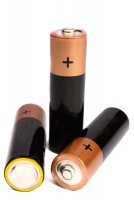 |
 Photo by: David R. Spencer, CC |
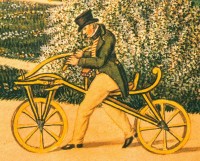 |
| Battery (1800) Country: Italy Inventor: Alessandro Giuseppe Antonio Anastasio Volta The first battery (a series of electrochemical cells) was invented by Alessandro Volta (physicist in Italy) in 1792. The science behind the concept of a battery that inspired Volta was observed by Luigi Galvani, who found that frog legs would twitch when touched by a spark from an external source of electricity (a Leyden jar). |
Railroad (1811) Country: England Inventor: John Blenkinsop Railroad transportation involves wheeled vehicles that operate on railway tracks. Railroads were important factors in the rise of the Industrial Revolution since they are capable of high capacity cargo loads, passenger transportation, and energy efficiency. In 1811, John Blenkinsop designed the first fully functional railway locomotive. |
Bicycle (1818) Country: Germany Inventor: Baron Karl de Drais de Sauerbrun The Draisienne (dandy horse), or laufmaschine, was first invented by Baron Karl von Drais of Germany. The machine was the first means of transportation to utilize two wheels simultaneously. |
 |
 |
 |
| Electric motor (1821) Country: US Inventor: Michael Faraday Electric motors produce mechanical energy by using an electric current and a magnetic field. In 1821, Michael Faraday discovered the conversion of eletrical energy into mechanical energy and made the first electric motor. |
Refrigerator (1834) Country: US Inventor: Jacob Perkins Refrigerators are appliances that keep food cool by moving heat from inside a thermally insulated compartment to its outside environment through the use of a heat pump. The first legally patented refrigerator was built and designed by Jacob Perkins. |
Vulcanization (1844) Country: US Inventor: Charles Goodyear Vulcanization is a chemical process which hardens rubber and similar polymers with sulphur or similar additives. It was patented in 1844 by Charles Goodyear. |
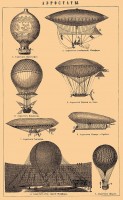 |
 |
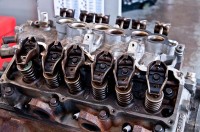 Photo by: Andrew Taylor, Creative Commons |
| Airships (1852) Country: France Inventor: Jules Henri Giffard Airships are lighter-than-air flying crafts that propel through the air with thrust mechanisms, such as propellers and rudders. The first passenger airship was built in 1852 and designed by Jules Henri Giffard. |
Mass-production steel (1856) Country: UK Inventor: Henry Bessemer While steel has always been a valuable metal produced in forges of blacksmiths for thousands of years, it first became an inexpensive mass-produced material when Henry Bessemer invented an industrial process to easily produce it. |
Combustion engine (1858) Country: France Inventor: Étienne Lenoir In 1858, Étienne Lenoir designed an internal combustion engine, a type of engine which produces mechanical energy through the combustion of a fuel. His design was the first to be able to be manufactured en masse. |
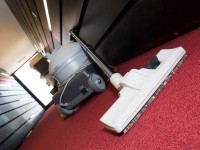 |
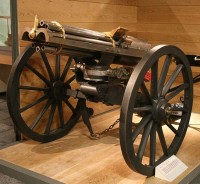 |
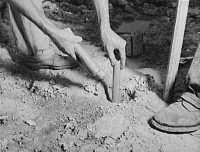 |
| Vacuum cleaner (1860) Country: US Inventor: Daniel Hess A vacuum cleaner is a home appliance which uses an air pump to remove dirt and dust from flat surfaces, where these contaminants tend to gather. In 1860, Daniel Hess invented a vacuum cleaner which he called a carpet sweeper. |
Rapid fire firearm (1862) Country: US Inventor: Dr. Richard J. Gatling Richard Gatling invented the first rapid-fire firearm, known as the Gatling gun. It was first used by the Union in the American Civil War. Ironically, Gatling wanted to show how futile war is. He wanted to reduce army sizes and reduce deaths caused by disease and combat. |
Dynamite (1867) Country: Sweden Inventor: Alfred Nobel Dynamite was first invented by Alfred Nobel in 1867. It was more manageable and powerful than black powder. Dynamite is based on nitroglycerin. It is used for many industrial purposes, including quarrying, demolition, construction, and mining. |
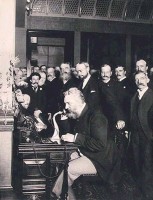 |
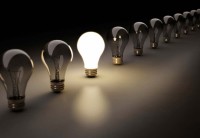 |
|
| Telephone (1876) Country: US Inventor: Alexander Graham Bell The telephone allows at least two users to communicate from far away as though they were next to each other. It was first invented by Alexander Graham Bell in 1876. Today it is an indispensible small appliance. |
Incandescent light bulb (1879) Country: US Inventor: Thomas Alva Edison An incandescent light bulb produces light by the use of a filament wire that is heated electrically until it glows. The first incandescent light bulb was made by Humphry Davy by passing current through a thin strip of platinum. It was not practical, however, and many modifications had to be made before the incandescent light bulb could become commercially viable. |
Inventions of the 20th Century


